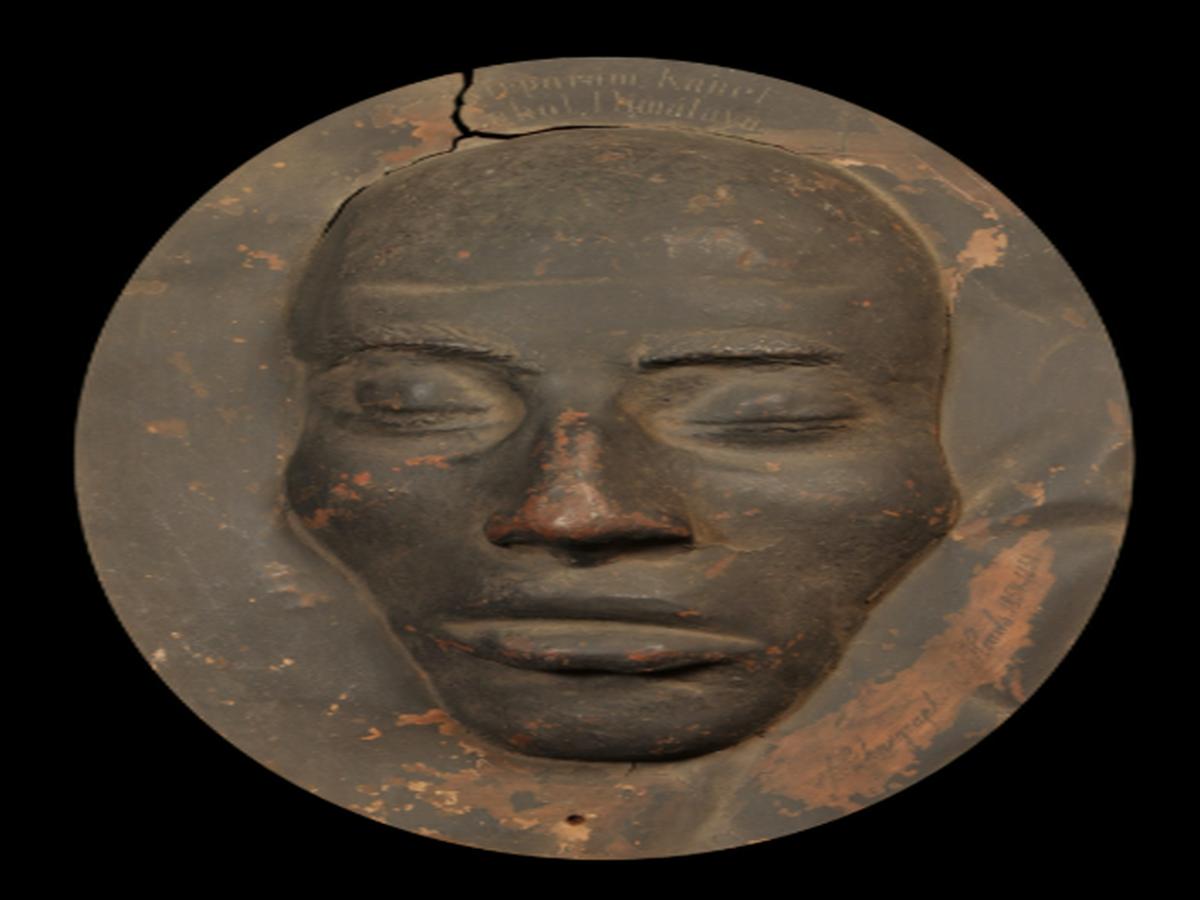State
Tribe Name
Art Type
short description
This metallic face mold, in an oval form, is one such the face of Ruparam, a man of Lahaul, a place found in the Himalayan region of Himachal Pradesh, India. The cast registers important features such as thick lips which gives a particular characteristic to the much-personalized face likeness. The individual name and locality of the person are engraved on the upper part of the mould so that identity as well as geographical context is preserved. This face mold relates to the Kanet tribe which is basically a community of people residing in the Lahaul-Spiti region. The Kanet tribe, however also Kinnauris or Sharu, is one of the tribes that are existing today in the harsh and high-altitude regions of Himalayan Himalayas. The tradition ranges rich heritage and is culturally-inclined towards exclusive agriculture, animal husbandry, and spiritual practice. Face molds of this kind are generally produced to honor eminent people and as a memory of their contribution or relevance to the community.
Thumbnail

Filter Postion
Right
Filter Background
Off
Theme
Filter Header Image

content
Image

description
This metallic face mold, in an oval form, is one such the face of Ruparam, a man of Lahaul, a place found in the Himalayan region of Himachal Pradesh, India. The cast registers important features such as thick lips which gives a particular characteristic to the much-personalized face likeness. The individual name and locality of the person are engraved on the upper part of the mould so that identity as well as geographical context is preserved. This face mold relates to the Kanet tribe which is basically a community of people residing in the Lahaul-Spiti region. The Kanet tribe, however also Kinnauris or Sharu, is one of the tribes that are existing today in the harsh and high-altitude regions of Himalayan Himalayas. The tradition ranges rich heritage and is culturally-inclined towards exclusive agriculture, animal husbandry, and spiritual practice. Face molds of this kind are generally produced to honor eminent people and as a memory of their contribution or relevance to the community.
The metal craft associated with the casting of such face impressions shows the artistical skill of local craftsmen. Mold-making is a means of cultural preservation, portraying a visual record of the people to their traits. This artifact today is kept in the Indian Museum at Kolkata. It gives information on the customs and identity behind them of the people of Kanet. The Kanets, also Kinnauri or Kandor, are indigenous inhabitants of the mountains who live in remote and high-elevation areas of Himalayas. Along with this, the tribal people boast much in terms of full culture as they are rich in traditions concerning farming, animal husbandry, and even spiritual customs. The face molds were made in honor of great persons and also to remember their services or the importance of their existence in the community. The craftsmanship in the making of these face casts speaks of the artistic skill of local artisans. The manufacture of face molds formed part of the cultural preservation offering a visual record-the people to their traits.
The metal craft associated with the casting of such face impressions shows the artistical skill of local craftsmen. Mold-making is a means of cultural preservation, portraying a visual record of the people to their traits. This artifact today is kept in the Indian Museum at Kolkata. It gives information on the customs and identity behind them of the people of Kanet. The Kanets, also Kinnauri or Kandor, are indigenous inhabitants of the mountains who live in remote and high-elevation areas of Himalayas. Along with this, the tribal people boast much in terms of full culture as they are rich in traditions concerning farming, animal husbandry, and even spiritual customs. The face molds were made in honor of great persons and also to remember their services or the importance of their existence in the community. The craftsmanship in the making of these face casts speaks of the artistic skill of local artisans. The manufacture of face molds formed part of the cultural preservation offering a visual record-the people to their traits.
Image Mode
landscape
promoted
On
Verified
Off
